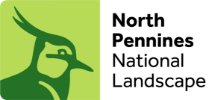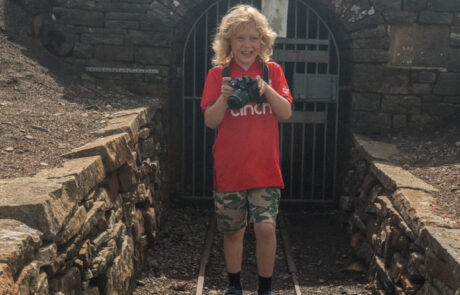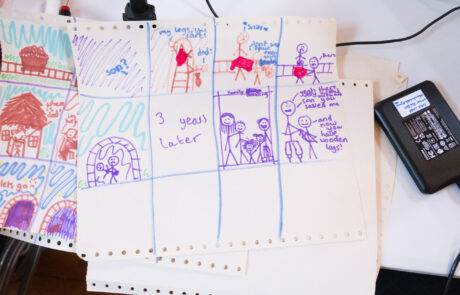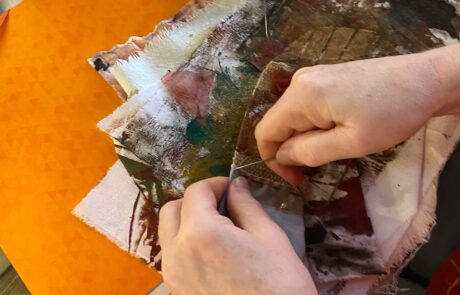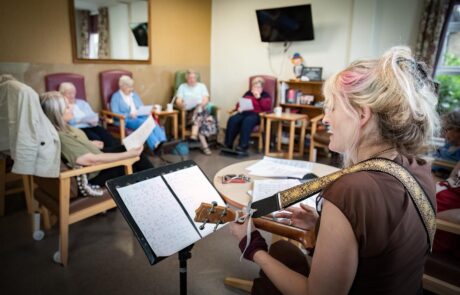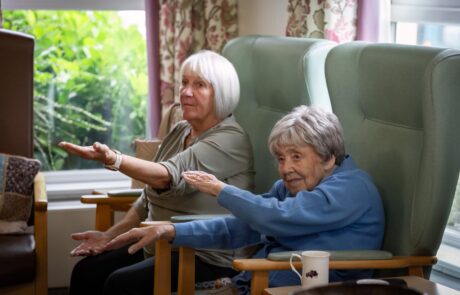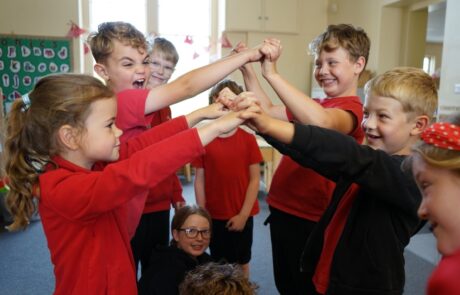News
Exhibition at Bowlees Visitor Centre: Arts celebrating the North Pennines mining heritage
Arts exhibition celebrating the North Pennines mining heritage
2 October 2025
The exhibition in the gallery space at Bowlees Visitor Centre during October is showcasing inclusive and accessible arts activities that have enabled people to get involved in the North Pennines lead and silver mining heritage.
The North Pennines National Landscape team has worked with artists, Jenny Brook, Amanda Drago, Robin Webb and The Knotted Project, throughout 2025 to deliver community arts workshops, as part of the Land of Lead and Silver project.
Artist-in-residence, Jenny Brook, led a four-week course to create textile work inspired by the region’s mining heritage, geology and minerals, and local flora and fauna. The workshop brought fourteen local women together to explore textile processes, including eco-dyeing and printing, cyanotype printing and mark making with natural and recycled objects. Designs were further inspired by historical images and mining specimens borrowed from the Alston Moor Historical Society and local historical books and pamphlets.
The exhibition displays individual experimental pieces collaged into final textile artworks which express participants’ thoughts and feelings about living in a landscape shaped by mining heritage.
“I met some lovely people and learnt some new things. Really sorry its finished.” – participant feedback
The workshop provided a safe, creative space to reduce rural isolation, encourage new friendships, and share stories while developing personal creativity. The lasting outcome of the workshop is a formation of a monthly social crafting group and the start of a new textile project supported by the Land of Lead and Silver project.
Dance and movement artist, Amanda Drago, delivered a series of folk song and seated dance workshops engaging a group of around ten women aged 70-90, many with dementia or health conditions, from the Alston Ladies Social Group. The workshops were supported by musician and facilitator, Lindsay Hannon, and musician/sound engineer, Kit Haigh.
Amanda researched traditional songs from the North Pennines that reflected the lives of lead miners, such as ‘Four pence a day’, ‘Bonny moorhen’ and ‘Meet me Molly’. In Lindsay’s singing sessions, the group learnt songs by ear, discussed the lyrics, and shared memories.
“We’ve taken it quite seriously as a rehearsal – we’ve gone back over lyrics, we’ve changed lyrics where we’ve needed to, we’ve looked at the key of certain things so we could all engage as best as possible with the music.” Lindsay Hannon
Amanda facilitated movement sessions, choreographing and co-creating accessible seated dances inspired by traditional English folk dance. The participants were active contributors to the sessions offered opportunities for social connection and creative expression while bringing new life to forgotten local folk traditions.
“Dancing is a sociable pastime and, actually, dancing in a group is fun. That’s what they want to do … be engaged and enthused about their day, having done something enlightening and creative.” Amanda Drago
Over the six months of the project, the group built up a repertoire of dances and songs. The exhibition shows a film of the final session.
The exhibition also shows a series of animated films inspired by the local lead and silver mining heritage. Animator, Robin Webb, created films with the help of young people from the regions of Allenheads and Nenthead using a variety of animation techniques.
Participants went on various mine site visits to record sound, and created videos using a variety of vintage cameras, thermal printed photographs, and digital photography. An example of one of the fourteen animated films called ‘Out brief candle’ is about a first day at the forge which leads to an unforeseen mystery in the mine.
The Knotted Project led a community theatre programme researching the incredible history of the area and stories of the mining communities of Nenthead, Alston Moor and the surrounding landscape. Following conversations with locals and elderly residents about their memories of days gone by, they took the stories into local primary schools, where the children animated the tales, bringing them to life through drama.
“I was taken out of school and sent down the scary dark mines. They were so scary! Deadly! Cold! I hate this misery. Why was I chosen? Was anyone else? The mines were narrow… I don’t like it! Why did they have to drag me out? Why did I have to be chosen?” Young person’s creative writing
Working with Alston Moor Drama Group in response to the primary schools writing, a workshop was co-designed that would engage people at the Nenthead200 weekend event. The result was some incredibly powerful inspiring writing about the people, the landscape, the conditions and the challenges of life in the mining communities of the North Pennines.
A number of community workshops were then delivered at Nenthead200, engaging locals and visitors in the local mining history through theatre, performance and creativity. Young people and their families got stuck in with some physical theatre to animate moments from history. The exhibition shows photos and examples of work from the creative sessions.
The exhibition is at Bowlees Visitor Centre until 31 October, open daily from 10am to 4pm.
Notes for editors
Contact the North Pennines National Landscape communications team for further information – communications@northpennines.org.uk / phone: 07920020648.
About The National Lottery Heritage Fund
As the largest dedicated funder of the UK’s heritage, The National Lottery Heritage Fund’s vision is for heritage to be valued, cared for and sustained for everyone, now and in the future as set out in our strategic plan, Heritage 2033.
Over the next ten years, the Heritage Fund aims to invest £3.6billion raised for good causes by National Lottery players to bring about benefits for people, places and the natural environment.
The Heritage Fund helps protect, transform and share the things from the past that people care about, from popular museums and historic places, our natural environment and fragile species, to the languages and cultural traditions that celebrate who we are.
The Heritage Fund is passionate about heritage and committed to driving innovation and collaboration to make a positive difference to people’s lives today, while leaving a lasting legacy for future generations to enjoy.
Follow @HeritageFundUK on Twitter, Facebook and Instagram and use #NationalLotteryHeritageFund www.heritagefund.org.uk.

About Historic England
We are Historic England the public body that helps people care for, enjoy and celebrate England’s spectacular historic environment, from beaches and battlefields to parks and pie shops. We protect, champion, and save the places that define who we are and where we’ve come from as a nation. We care passionately about the stories they tell, the ideas they represent and the people who live, work, and play among them. Working with communities and specialists we share our passion, knowledge, and skills to inspire interest, care, and conservation, so everyone can keep enjoying and looking after the history that surrounds us all. Follow us on social media @HistoricEngland

The North Pennines National Landscape is one of England’s most special places – a peaceful, unspoilt landscape with a rich history and vibrant natural beauty. It was designated as an Area of Outstanding Natural Beauty (AONB) in 1988. The purpose of this nationally recognised designation is the conservation and enhancement of the natural beauty of the area.
At almost 2,000 sq. kilometres the North Pennines is the second largest of the 46 National Landscapes (in England, Wales and Northern Ireland) and is one of the most peaceful and unspoilt places in England. Visit www.landscapesforlife.org.uk for information about the National Landscapes family.
The North Pennines lies between the National Parks of the Lake District, the Yorkshire Dales, and Northumberland with the urban centres of County Durham away to the east. Parts of the National Landscape are within the boundaries of four local authorities; Cumberland Council, Durham County Council, Northumberland County Council, and Westmorland & Furness Council.
The North Pennines National Landscape Partnership is an alliance of public, statutory and voluntary sector bodies with an interest in the future of the North Pennines. The work of the Partnership is carried out by the National Landscape team which takes action to conserve and enhance the natural beauty of the area, to raise awareness of its special qualities and to improve the quality of life for local people.
UNESCO Global Geopark – As well as being a National Landscape, the North Pennines is a UNESCO Global Geopark. This puts the area’s Geopark status in the same UNESCO family as World Heritage Sites and Biosphere Reserves. UNESCO Global Geoparks are places with outstanding geology where special effort is made to make the most of geological heritage to support community and economy. Locally this includes producing geo-trails, developing projects with school and community groups, producing displays for visitor attractions, and holding geology festivals and events.
The Land of Lead and Silver project has been awarded funding from The National Lottery Heritage Fund and Historic England and will run between January 2024 to December 2027, working with volunteers and local communities to unearth the stories of lead and silver mining in the North Pennines National Landscape and UNESCO Global Geopark.
